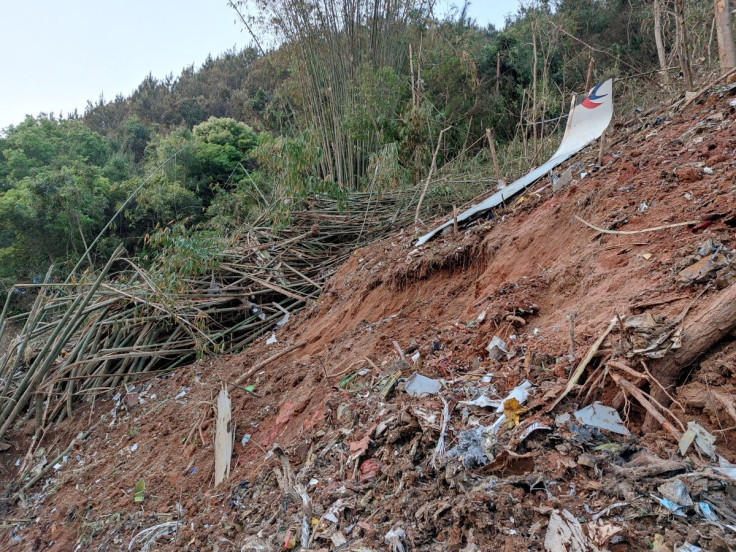Flight MU5735 Update: Aviation Experts To Visit China To Unravel Mysterious Crash
KEY POINTS
- Engine maker CFM International will support the investigation
- The impact of the plane created a 65-foot-deep pit at the crash site
- A recovery team has collected more than 36,000 fragments of the passenger jet
A team of U.S. airplane accident investigators and technical experts will likely head to China this week to unravel the mystery behind the China Eastern Airlines plane crash, the National Transportation Safety Board (NTSB) said Tuesday.
The Chinese government has issued visas to investigators, along with technical advisers for the U.S. Federal Aviation Administration and Boeing, the NTSB wrote in a Twitter post.
Engine maker CFM International, a joint venture of General Electric and France's Safran, will support the investigation, but isn't planning to travel to China, Bloomberg reported.
The Boeing 737-800 crashed in the southern region of Guangxi on March 21, while flying from Kunming to Guangzhou. All 132 passengers and crew on board the plane were declared dead.
The plane was cruising at 29,000 feet when it suddenly nose-dived. Air traffic control attempted to contact the pilots several times after noticing the plane’s drop in altitude, but received no answer. The tragedy is the nation's first commercial jetliner crash in more than a decade.
Flight data revealed the plane plunged out of the sky and crashed into the mountain. The impact of the plane created a 65-foot-deep pit at the crash site, and scattered debris along the side of the mountain.
Chinese investigators revealed Monday a recovery team has collected more than 36,000 fragments of the passenger jet. The fragments have been sent for examination with hopes of clues into the cause of the crash.
Searchers scrambling the crash site have already found both the black boxes, containing cockpit voice and flight data recorders. Some parts of the black boxes were said to be severely damaged. The data within them are retrievable, but the process usually takes about 10 days to two weeks, Wang Yanan, chief editor of Aerospace Knowledge, said according to CGTN.
The plane nose diving into the ground after a steep descent has left experts baffled as to what led to the incident. Several theories emerged following the crash, including some experts claiming that a technical error may not be the real reason for the crash.
Aviation expert Neil Hansford said last week the crash could be a human-induced event.
“My tipping is a human-induced event or bought down by rogue missile. Debris looks like MH117 over Ukraine, and the Chinese are providing too much information this time which is uncharacteristic," he was quoted as saying by News.com.au.
However, International Business Times could not independently verify this theory.

© Copyright IBTimes 2024. All rights reserved.





















